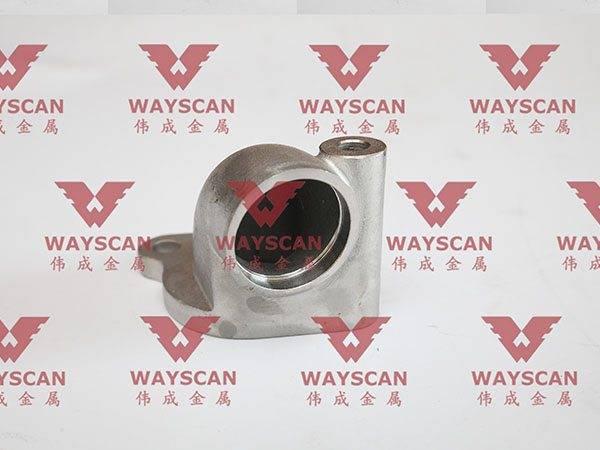Dublin, Nov. 30, 2022 (GLOBE NEWSWIRE) -- The "Drip Irrigation Market by Crop Type, Component (Drip Mainlines/Drip Tubes, Filters & Fertilizer Injectors, Fittings & Accessories, Emitters/Drippers, Pressure Pumps, and Valves), Emitter/Dripper Type, Application and Region - Global Forecast to 2027" report has been added to ResearchAndMarkets.com's offering.
The drip irrigation market size is estimated to be valued at USD 5.2 billion in 2022 and is projected to reach USD 8.3 billion by 2027, recording a CAGR of 9.8% during the forecast period in terms of value. Lost Wax Casting China

Drip irrigation systems, together with the combination of appropriate crop management practices, improve water use efficiency and crop yield. It enables the uniform application of water to crops, which leads to optimum crop yield, even when there is a limited water supply.
The use of drip irrigation in crops has helped farmers to achieve an average of 40%-50% increase in yield. Owing to these factors, the demand for drip irrigation is gaining traction during the forecast period.
By crop type, the fruits & nuts segment is estimated to grow at the highest CAGR during the forecast period
High-profit margins and increasing export demand for fruits & nuts have increased the adoption of drip irrigation products in the fruits & nuts segment. The use of drip irrigation systems in fruit orchards is a prudent process that requires monitoring different parameters to ensure optimal growth.
Regions with uneven precipitation are difficult for crop growth, which can result in plant stress during the critical stages of growth. Moreover, the cultivation of fruits such as apples, pomegranates, oranges, papaya, and nuts such as cashews, pistachios, and almonds are among the key factors aiding the growth of drip irrigation systems in the Asia Pacific region.
The high export demand for fruit and nut products and the high margin of profits have helped in driving the demand for drip irrigation systems, especially in the fruits and nuts segment.
By component, filters & fertilizer injector segment holds the second largest share during the estimated year
Filter solutions are sought to overcome poor water quality and the increasing risks of clogging in subsurface systems. The presence of filters is essential in preventing any kind of clogging, and the presence of filters is encouraged in minimizing the effects of salinity as well.
Moreover, farms across the Midwestern US and other parts of the country usually derive water for irrigation from creeks, ponds, reservoirs, and water catchment tanks, which, in most cases, may contain algae as well as sand. The use of filters, in this case, helps the farmers avoid clogging, especially in the US farms.
All these benefits of filters & fertilizer injectors is responsible for the large market share.
By application, subsurface segment is estimated to witness the steady growth rate over the forecast period
Advancements in fertigation and inline emitter technologies is driving the growth of the subsurface segment. Subsurface irrigation usually works at relatively low pressure and delivers small flow rates.
Irrigation water required in the subsurface application should be of good quality to avoid excessive soil salinity. It also provides other advantages such as less nitrate leaching, higher yields, and dry soil surface for weed control. Moreover, it helps in the safe irrigation of wastewater.
Additionally, the demand for subsurface equipment remains high in China and India in the Asia Pacific for crops such as sugarcane and grapes. However, the adoption of subsurface equipment in these countries is limited to large farm owners and institutional farming due to the high setup costs involved.
North America holds the second largest share during the estimated year
In North America, most irrigated areas use groundwater as it is the only reliable water resource and is used in conjunction with pressurized irrigation equipment or pumping.
This region has continued to be a major consumer of drip irrigation systems. The favorable federal policies toward the adoption of drip irrigation due to concerns over water scarcity and federal tax cuts are factors projected to further improve the growth prospects for drip irrigation systems in the region.
The North American region is among the largest producers of corn and soybean that contribute significantly to the economic conditions of the Midwest US, which is also the source of exports to other countries.
Some of the major players in the drip irrigation market are Jain Irrigation Systems Limited (India), Lindsay Corporation (US), The Toro Company (US), Hunter Industries Incorporated (US), Netafim (Israel), Rain Bird Corporation (US), Rivulis (Israel), Shanghai Huawei Water Saving Irrigation Corp., Ltd. (China), Antelco Pty Ltd. (Australia), Chinadrip Irrigation Equipment Co. (China), and Elgo Irrigation Ltd. (Israel).
Estimated Market Value (USD) in 2022
Forecasted Market Value (USD) by 2027
High Adoption of Drip Irrigation in Developing Economies Fueling Market Growth
China Accounted for Largest Market Share in Asia-Pacific
Drip Mainlines/Drip Tubes Segment to Dominate Market During Forecast Period
Field Crops to Dominate Market During Forecast Period
Surface Segment to Dominate Market During Forecast Period
Inline Segment to Dominate Market During Forecast Period
Asia-Pacific to Dominate Market During Forecast Period
Government Programs and Subsidies Driving Acceptance of Drip Irrigation Systems
Efficiency in Use of Water in Drought-Prone Areas
Cost Efficiency in Agricultural Production
High Initial Cost of Large-Scale Drip Irrigation Systems
High Cost of System Maintenance
Increasing Adoption of Precision Agriculture and Sustainable Practices
Advancements in Technological Capabilities of Drip Irrigation Systems
Environmental Degradation of Equipment Resulting in Additional Costs for Clean-Up and Disposal
Soil Salinity Hazards and Bioclogging in Drip Irrigation Systems
Chinadrip Irrigation Equipment Co. Ltd.
Shanghai Huawei Water Saving Irrigation Corp. Ltd.

Lost Wax Products For more information about this report visit https://www.researchandmarkets.com/r/r5jaef